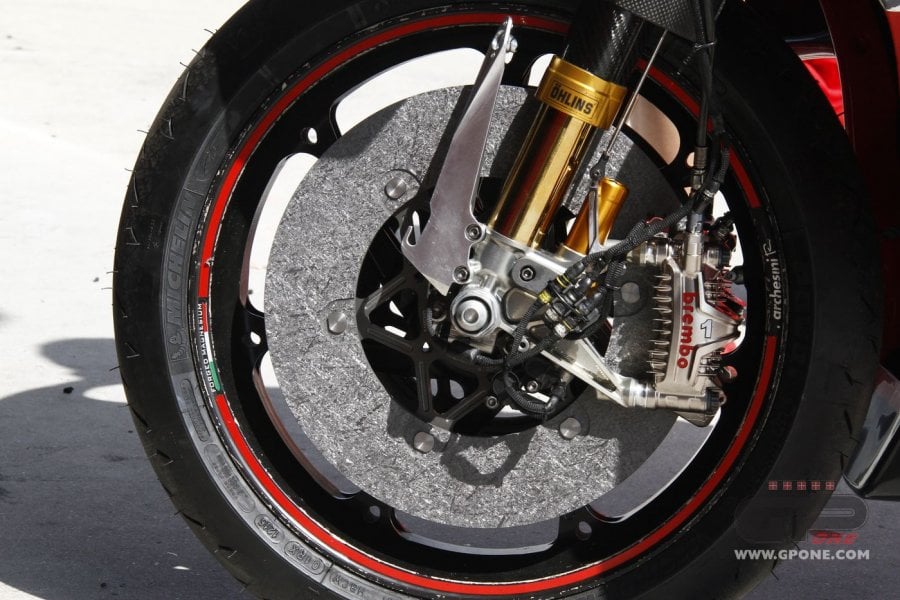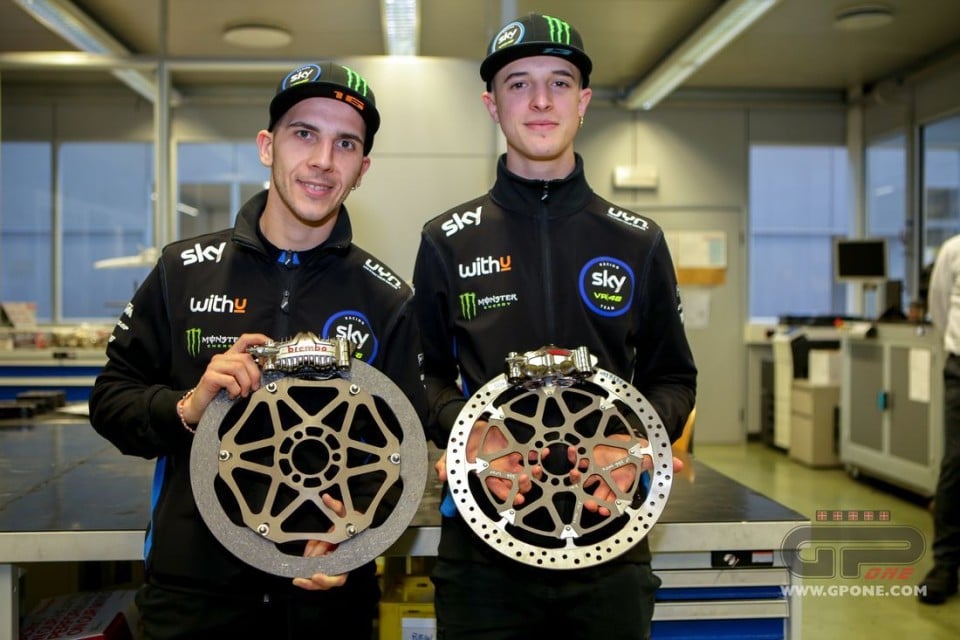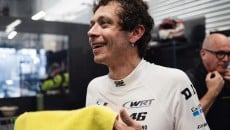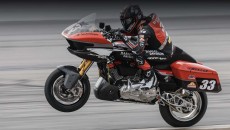If there was a speedometer on the MotoGP bikes, the riders would see more than 350 km/h before closing the throttle and stretching their fingers on their personal parachutes. Two simple - if you can say so - carbon black discs, which are entrusted with the task of bringing them from hyperspace to reality just in time to make the curve.
San Donato is one of the most iconic braking sections of the entire MotoGP world championship. Valentino dedicated a helmet to it a few years ago, Migno dedicates it to those who work day after day to make it even more exciting: “To all Brembo employees, thank you very much for protecting us at the San Donato corner in Mugello and to let us overtake under braking!" declared Andrea after a visit with Vietti to Brembo’s headquarters at Curno, a few kilometres from Bergamo.
A factory where around 3,000 people work (of the more than 10,000 who are part of the whole group worldwide), where they study and create the brakes which will then go to MotoGP and Formula 1, to name only the two most prestigious motorsports series, but you can think of virtually every two or four-wheel vehicle and in those buildings you can surely find what it takes to stop it.
Science and passion go hand in glove

Wandering around this braking sanctuary, you seem to be in a laboratory that prepares vehicles ready to be launched into space. In every corner there are machines (from which the cameras are kept at a safe distance) that create what appear to be carbon works of art. "From purchasing the material to the finished product, it takes about 10 months to create a disc used in Formula 1" explains Mauro Piccolo, Brembo Racing sales manager and our guide.
Once mounted on a single-seater car, those systems must withstand incredible stress: they also reach a temperature of 1,200°, 4,600 Nm of torque and up to 6 g of deceleration. "And we are talking about a disc that is the size of one on a Fiat 500", the city car, let alone the much-missed 2-stroke monsters.
The workmanship is very precise: a machine creates about 1,350 tiny holes for cooling and just one small error means that everything has to be thrown away. In addition, each Formula 1 team requires specially designed calipers. They look like pieces of contemporary art, but even in this case you have to resort to your imagination because secrecy forbids images.
Engineering technique is on display here, but passion is also present and well demonstrated by the assault for autographs and souvenir photos which the riders of the Sky VR46 team happily undergo.
MotoGP: tyres and wings put the brakes to the test

If Formula 1 remains the top of technology, MotoGP is just behind. Indeed, the biggest developments regarding brakes in 2020 will be seen on two wheels. Already in the winter tests in Spain last year a new caliper made its debut and this will be the standard for the new season.
Recognizing it is easy, because it has fins to improve cooling.
“The temperatures of the systems are increasing, which is why we introduced this innovation - explained Andrea Pellegrini and Andrea Bergami, who follow the world championship riders at the race tracks - The first feedback from the riders was positive, because we also reduced the quantity of fluid in the system and this allows greater consistency and a decrease in the sponginess of the lever".
Lap times decrease every year and the brakes have to adapt.
"On the one hand the performance of MotoGP bikes increases and then we have to consider the evolution of tyres and aerodynamics: all this means greater braking torque and temperatures - the two technicians continued - We have calculated that, compared to 2019, this season there will be a 10% increase in braking effort".
Mathematics wins in Formula 1, sensations in MotoGP
Not only do the racing departments of the manufacturers work at full capacity in the winter, even in Brembo they went out of their way for 2020. For everything to be perfect when you get on the track there are both static and dynamic test benches. The most fascinating one is the latter, which thanks to forced ventilation can simulate the different speed of the air that hits the brakes as the speed changes.
You can even insert the telemetry of a car or a motorcycle to faithfully simulate the lap on a certain track.
In other words, there seems to be no place for the rider in the midst of all this technique, but it is not so.
"The rider is less of an object in MotoGP - said Piccolo - because he moves while riding and following his feelings remains the best way of understanding if he is on the right track".
It applies to the brakes but also to the rims, which come from the same factory with the Marchesini brand. MotoGP uses them in magnesium, SBK in aluminium, with a weight saving of around one kilo for the most valuable alloy.
The visit is over, and Migno and Vietti remain for the final photos. “My favourite braking point… San Donato at Mugello and Turn 4 at Phillip Island,” is Andrea's answer. "I prefer the Dry Sac at Jerez, or the one at the end of the back straight at Motegi: both technical and downhill," says Celestino.
The next time they tackle them, before holding the lever between their fingers, perhaps they will remember the reason why their bikes come to a stop.
If you want to know more about braking, HERE you can find our guide.










